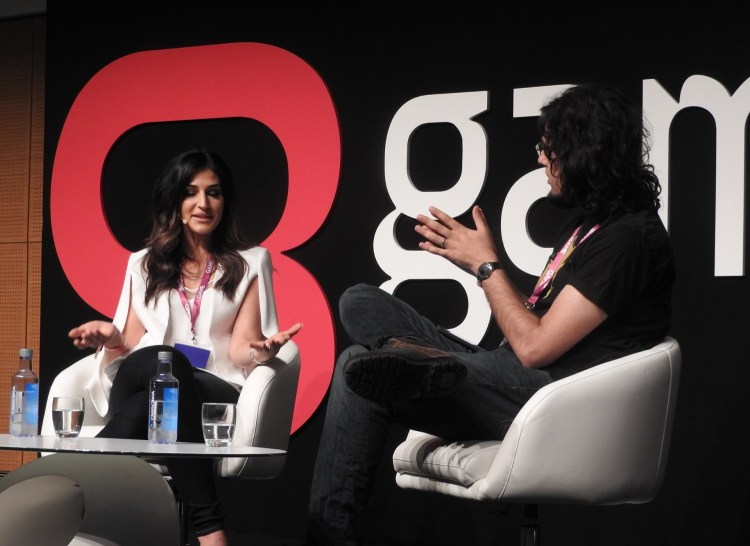We’ve heard a lot about the indie developer fairy tale of Cuphead and Studio MDHR, a tiny studio whose first game went platinum when it debuted in the fall of 2017.
But to me, the inspiration around this story never gets old. Indie dev champion Rami Ismail went on stage at Gamelab in Barcelona to interview Maja Moldenhauer of Studio MDHR about the making of Cuphead. It’s a sign that games are still a very creative business, and if you come up with a creative idea — even if it doesn’t start out seeming very creative — and if you respond to what fans want, then it can come to fruition, become a hit, and take you to the top of the industry. And that can happen even when the industry is dominated by companies like Ubisoft with 12,000 developers.
The Cuphead story is very personal to me, and it’s like a Brothers Grimm fairy tale of two brothers, Chad and Jared Moldenhauer, who wanted to make a game (about two characters who sold their soul to the Devil) that reminded them of the games they grew up playing.
Those games were hard, where you had to know what you were doing with a game controller at every moment. Their vision was to make a game that only had the boss battles, the tough parts that usually just came at the end of a game. As games became bigger, they also became easier. It was as if these two very young adults were in fact two very old guys who were bemoaning the fact that didn’t make games like they used to do.
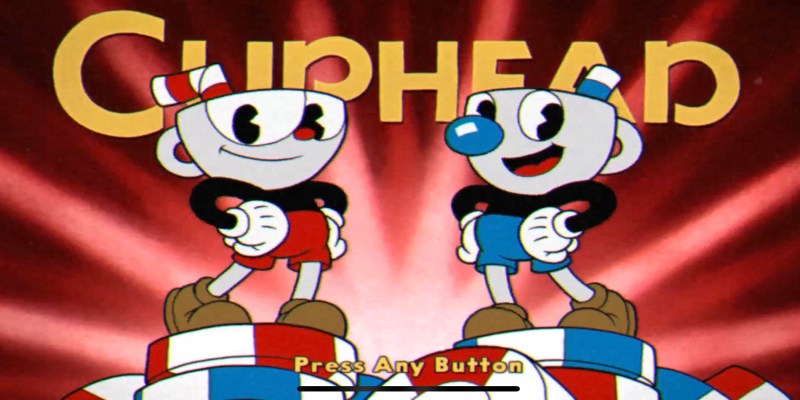
Above: Cuphead
The early work started around 2010. In the design in their heads, the mechanics came first. This was the thing that they wouldn’t compromise, Maja said. The art turned out to be very striking, based on 1930s cartoons, but it was secondary to the mechanics. The brothers talked about wanting to make this game — a 2D run-and-gun platform game — for years.
In 2014, the family finally got serious. Chad said he wanted to sell his Internet marketing business and make the game, and Maja, who was married to him, encouraged him to do it. Jared, who was in construction, wanted to do it too. Maja knew how strongly they felt about this. As an artist who had channeled herself into a career in finance, she wanted to get on board with making the game, as she didn’t want to grow old thinking about never taking a chance on a passion.

Above: If Betty Boop was an evil sea monster.
They taught themselves what to do. They did some work with a single Eastern European programmer, and then they put up a video snippet to see “if there were more than 10 people who wanted to play the game,” Maja said. After seeing that video, Microsoft’s indie publishing people tracked down the founders and signed them up as an ID@Xbox title. On Christmas Eve, they got a call. The family was shocked and ecstatic. They had an idea of what they liked, and they finally got some validation.
Studio MDHR came into being and started making the game for real, hiring people on the potential of the opportunity. While they got support from Microsoft, they didn’t get a big pile of development money. Yet the amount of work was masssive. The brothers created more than 150 characters before they decided on Cuphead as the lead character.
Little by little, they took more risks. They mortgaged their homes in Toronto and Ontario, after getting a progressively better response from fans. At the 2015 Electronic Entertainment Expo (E3), Chad and Jared got to go up on stage to talk about Cuphead, which fit within the larger theme of Microsoft’s outreach to indie developers. The fan response to the video they showed at the time was extremely positive. That’s when they knew they could make a really big bet on Cuphead.
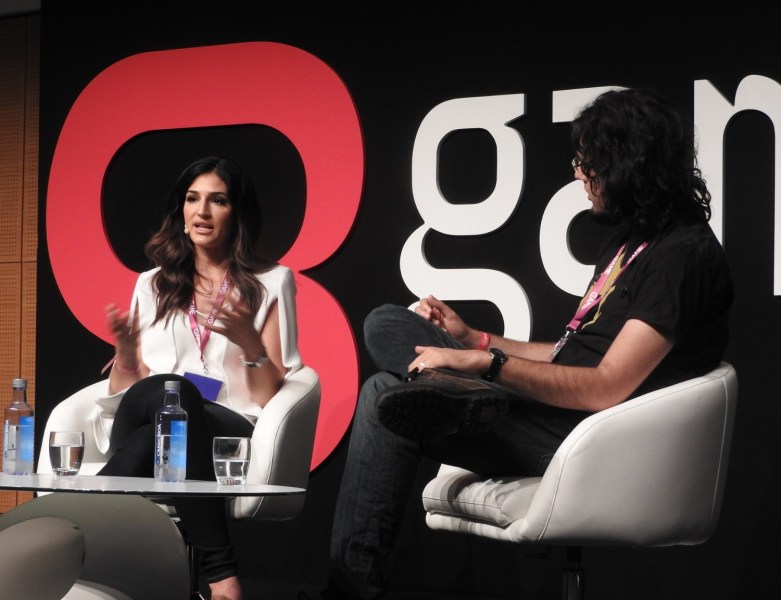
Above: Maja Moldenhauer and Rami Ismail at Gamelab.
While the studio grew larger, it didn’t do large scale playtests. They tested prototypes of bosses with people they knew, but they pretty much knew what they wanted to do, and tried to ignore distractions. They had the support of many communities, and those people helped them ignore the haters or offhand comments about what they should do.
The team shifted roles as needed. Maja was an artist at first, but she was more organized. She became the producer, while Chad, who showed a lot of creativity, became more of the art director and co-designer. The role of the producer is to shield the creative team from the business, and so Maja took those business calls.
Many things drove them to beef up the quality and miss their deadlines. Chad was a perfectionist. So many things, like the thousands of raindrops in one scene, had to be done just right. You can’t put a time stamp on getting those things done, Maja said. If they didn’t look right, they had to be redone. Maja tried to organize around that. It was no surprise that the time required to make the game stretched out, from the early vision of 2014 to shipping in September 2017.
Maja learned to be transparent with Microsoft about missing milestones and stamping out bugs. Microsoft told them to take their time, as you only get one chance to make a game good and a “bad game stays bad forever.” But they had supporters in part because they were starting to get kudos. The Game Critics Awards gave Cuphead the award of the best independent game for E3 2016.
The team started meeting other people in games, like Nathan Vella of Capybara Games in Toronto. They received more resources to finish, and in the end they had help from a work-for-hire company in Montreal, called Illogika, for the last eight months. That doubled the number of people working on the game to a couple of dozen.
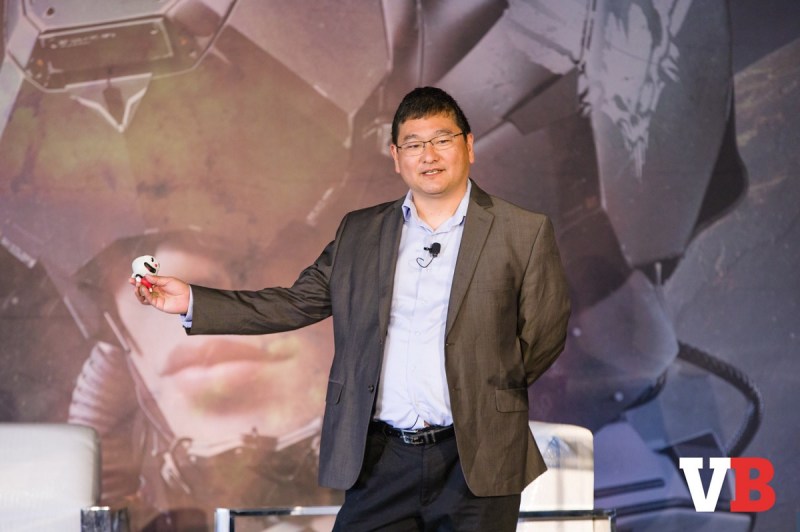
Above: Dean Takahashi holds Cuphead at GamesBeat Summit 2018.
I played a preview level of the final game at Gamescom in August 2017, and the resulting social media firestorm about my bad gameplay gave the game more notoriety, and it started a wider discussion about how difficult it is to make games that are intended for hardcore gamers at a time when so many players are casual.
That turned out to be a sideshow. The main event was that it turned out to be an awesome game. It had three hours of jazz ensemble music and 60,000 frames of hand-drawn images for its fiendishly difficult boss battles.
The studio decided the price would be $20. Others put pressure on them to have a higher price, but they stuck to it. The game went live on September 29, 2017, and in the first week of sales, it went platinum. By the end of 2017, sales topped 2 million units. That means the bet on re-mortgaging the houses paid off.
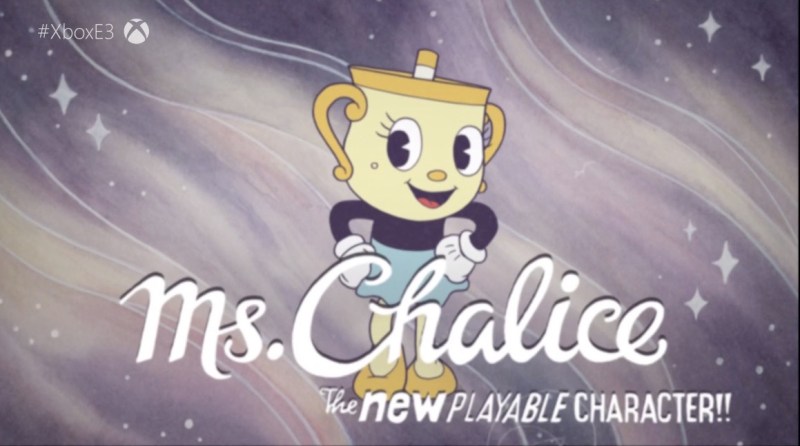
Above: Cuphead is getting a new character.
It turned out that a lot of gamers loved the idea of playing a challenging game. In fact, it was a whole subculture of people, like those who love speed running. The game had an impressive 86 out of 100 on the Xbox One and an 88 on Windows on Metacritic.
Cuphead won three major awards at the DICE Awards in Las Vegas, and it won dozens of other awards elsewhere. As a result of the success, Studio MDHR and its founders have become gaming celebrities. The fan art became huge, and Cuphead merchandise took off. Maja in particular has become in high demand for conferences asking her to talk about it. She has said that the company made enough money so now it can permanently focus on just making games.
Maja’s lesson: “Passion drives a lot of things to the right place. You have to love what you are doing. You have to know where you think you want to go. But be realistic.”
Now the company is working on a new expansion, Cuphead: The Last Delicious Course, for next year. That game has a third playable character, a female protagonist. On top of that, there are some other things that the company is working on that Maja can’t talk about. She said that plenty of pieces of the vision came from thinking about games for a couple of decades, and so the studio still knows what to do, Maja said.
“We just can’t talk about it yet,” she said.
Disclosure: The organizers of Gamelab paid my way to Barcelona. Our coverage remains objective.
